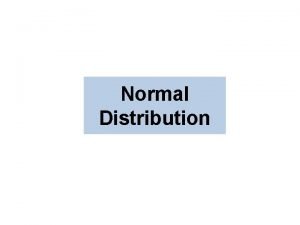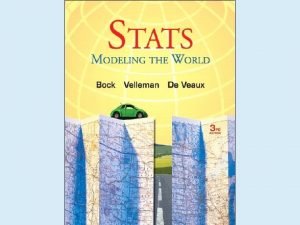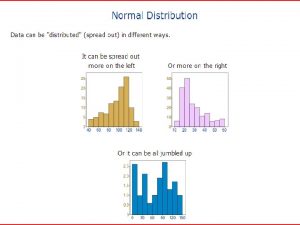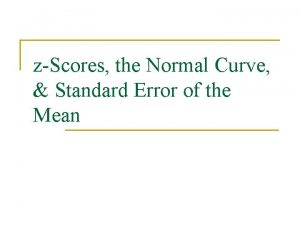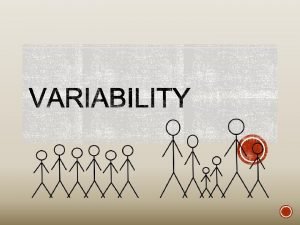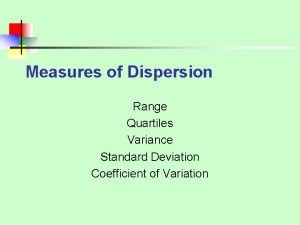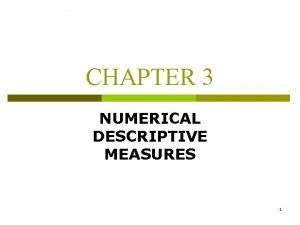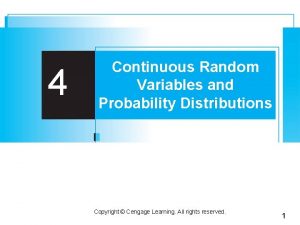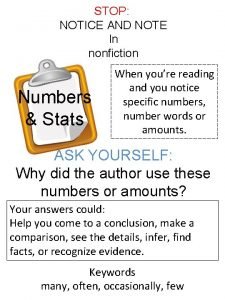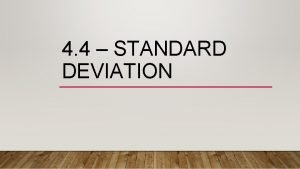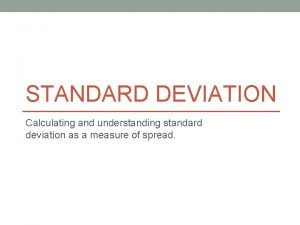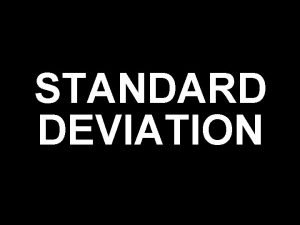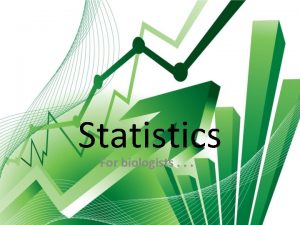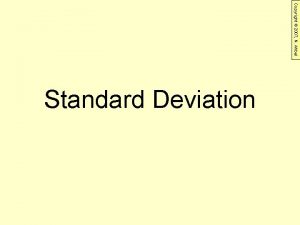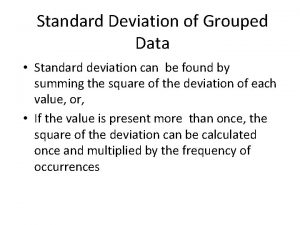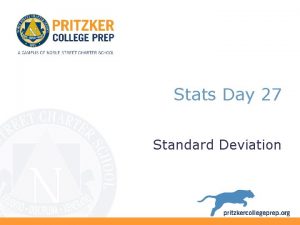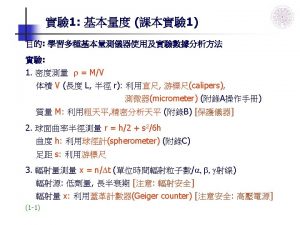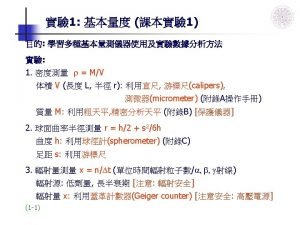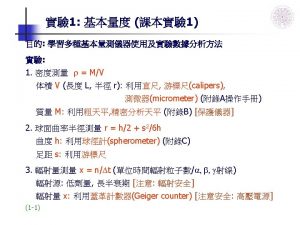Stats Day 28 Standard Deviation and the Normal





















- Slides: 21

Stats Day 28 Standard Deviation and the Normal Curve

SILENT DO NOW ON DESK: Notebook DO NOW: SAT ½ sheet Agenda: Do Now (10 min) SD Practice + ET (30 min) Calculator Tricks(10 min) Normal Curve Notes(25 min) Homework due October 10 th: p. 91# 9, 10 p. 123 #5, 6, 7, 9, 17, 18, 20, 21, 30, 32, 33, 34, 35, 38, 41, 42, 44

Objective SWBAT define, calculate, and compare standard deviation of a sample SWBAT draw a normal curve

Which has the smallest s?

Standard Deviation What is the definition for standard deviation? The average distance each data point is from the mean What is the variance? SD squared Find the SD and Variance: 1, 4, 4, 6, 10 s 2 = 11, s = 3. 32

Standard Deviation How to: 1) 2) 3) 4) 5) 6) Formula: find the mean subtract the mean from each data point square each value add up each squared value divide by n-1 (one less than the number of values) take the square root

Practice Finding SD 8, 9, 9, 10, 14

Exit Ticket Calculate Standard Deviation By Hand

Calculator Tricks You can find the SD in the calculator! In fact, you can find all summary statistics in the calculator! You can even make a boxplot! Make a boxplot, histogram and find all summary statistics for… 54, 78, 77, 80, 85, 80, 88, 80, 86, 90, 91

Calculator Practice 1, 2, 2, 3, 3, 4, 4, 4, 5, 5, 10

Going from a Sample to a Population We know how to graph data from a sample, but how do we understand data for a large population? If your population has no affecting factors that may alter the shape of the graph, it is ASSUMED that it can be modeled with a unimodal symmetric curve that we call the NORMAL MODEL -it is not reality, it is theoretical -it is found to approximate many natural phenomena

The Normal Curve Standard Deviation MEAN μ = (said mew) = population mean σ = population standard deviation

Normal Model A unimodal symmetric curve centered at the mean with a scale of the standard deviation § If a large enough sample shows nearly normal (nearly symmetric, unimodal) behavior, a normal model for the population can/should be used § If a sample does not show nearly normal behavior, a normal model can be used, but maybe shouldn’t be as it may not represent the population

Notation _ X = (said x-bar) = sample mean s = sample standard deviation μ = (said mew) = population mean σ = population standard deviation

Drawing Normal Models Notation: N ( μ, σ) Example: N(18, 3)

Sketch the Normal Distribution 1) N(500, 100) 2) N(100, 16) 3) Adult female weights are distributed with a mean of 139 and a standard deviation of 11

Area of a distribution 1) What percent of the graph is shaded? 2) What is the probability that you land in the shaded region?

Empirical Rule Normal models show the percent of the area of the curve above, below, or between given values We can use it for probability!

Make a Helper Finding area under a curve is calculus. Somebody did the work for you

Sketch and Describe Sketch the distribution of the birthweights of babies: N(7. 6 lb, 1. 3 lb) We are 68% sure that the baby will be born between ______lb and ______lb. We are 99. 7% sure that the baby will be born between _____lb and _____lb. What is the likelihood that the baby will be less than 8. 9 lbs?

Working with 68 -9599. 7 Rule A lightbulb on average lasts 500 hours, σ=30 1. What percent of lightbulbs last between 440 and 560 hours? 2. What percent of lightbulbs last over 590 hours? 3. What percent of lightbulbs last less than 470 hours? 4. What percent of lightbulbs last between 500 and 560 hours? 5. If you have a lightbulb that says it lasts 530 hours, what percentile is it?
 Day 1 day 2 day 3 day 4
Day 1 day 2 day 3 day 4 Mean absoulte deviation
Mean absoulte deviation How to calculate normal distribution
How to calculate normal distribution Standard deviation as a ruler and the normal model
Standard deviation as a ruler and the normal model Standard deviation as a ruler and the normal model
Standard deviation as a ruler and the normal model Formula for standard error
Formula for standard error Standard deviation percentage
Standard deviation percentage Day 1 day 2 day 817
Day 1 day 2 day 817 Standard error definition
Standard error definition Variance standard deviation formula
Variance standard deviation formula Covariance and standard deviation
Covariance and standard deviation Range variance and standard deviation
Range variance and standard deviation Variance vs standard deviation
Variance vs standard deviation Numerical descriptive statistics
Numerical descriptive statistics Sas geometric mean
Sas geometric mean Standard deviation sig figs
Standard deviation sig figs Which three criteria do binomial experiments meet?
Which three criteria do binomial experiments meet? Exponential distribution mean and standard deviation
Exponential distribution mean and standard deviation Balance point
Balance point Mathisfuncom
Mathisfuncom Numbers and stats signpost
Numbers and stats signpost Formula for median
Formula for median


